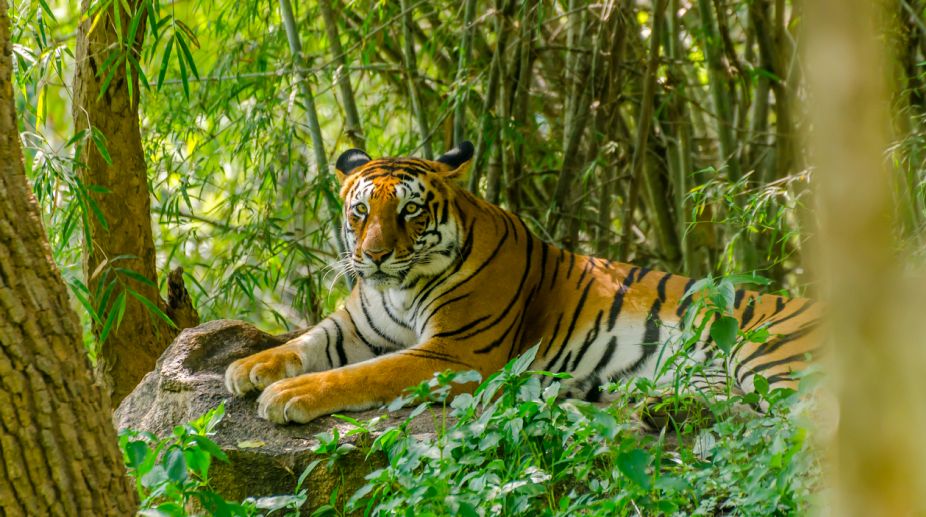Empowered women of the tiger land
With their backs to the wall, the brave women of Sundarban don’t look for promises.

(Photo: Getty Images)
The Rajaji Tiger Reserve (RTR) management is thrilled with the overwhelming results of the recent exercise to count the big cat through camera traps (remote controlled cameras).
The exercise has yielded a rich haul of photographs, indicating a surge inthe park’s tiger population, spread across Dehradun, Haridwar and Pauri districts of Uttarakhand.
The RTR authorities carried out an internal tiger census in February this year. A total of 290 cameras were installed in different parts of the park.
Advertisement
The work of data analysis is underway, with tiger stripes being scrutinised to ensure that a tiger is not counted more than once.
Rajaji Tiger Reserve Director Sanatan Sonkar says, "Over 700 photographs were captured by camera traps installed in different parts of the park. We have received about 450 good quality images."
In the 2013 census, less than 10 tigers were registered in Rajaji.
The annual assessment done after that gave a clear idea about impressive growth of big cats in the park, but the data was not released. The big haul of camera trap photographs received this time, has excited the authorities.
According to wildlife experts, Rajaji Tiger Reserve enjoys a strong link with Corbett National Park.
Earlier high human interference, with a large number of Gujjar settlements in the reserve area, and low prey base used to force tigers to stay for some time at Rajaji.
Now the forest dwellers have been shifted from Chilla, Rawasan, Motichoor, Haridwar, Kansro and Dholkhand.
The process of relocating Van Gujjars from Gauri, Ramgarh and Chillawali is presently underway. Similarly, Tehri dam oustees were moved out from Khand goan and relocated at Lal Pani.
Wildlife Institute of India scientist Bivash Pandav says, "Big population of ungulates (large mammals) and inviolate space were the main reasons for tigers spending a lot of time in Rajaji. The tiger relocation programme in western RTR will further help in increasing population of big cats in the park."
Eradication of lantana, an invasive weed with pink flowers, resulted in improvement in grassland and this has worked magic for the park. The RTR authorities are working on restoring the corridor between Ganga and Yamuna rivers for long-term conservation of this endangered species. Due to a series of conservation efforts, also because of its strong link with the Corbett tiger reserve, eastern RTR witnessed a big comeback by tigers. Such results are yet to take place in the western side.
RTR is also famous for its big population of Asiatic elephants. It is a paradise for wildlife lovers as it is home to tigers, leopards, spotted deer, sambhar, wild boar, barking deer, Himalayan black bear and over 400 bird species.
Advertisement